Who in the kitchen are a tireless fighter with dirty air, unpleasant smells, and smoke? That’s right – it’s a hood. And how well you approach her choice depends on how clean the air you and your loved ones will breathe. Regardless of the model and brand of exhaust device that you choose for your kitchen, they are all aimed at fulfilling a single goal – to clean the environment from steam, dirt and other various harmful substances that fall into it every time you cook food. Modern technologies have managed to solve this problem in two ways – using special filters in the hood or by removing harmful substances outside the room through ventilation. So, how to choose the right hood for kitchen, which is 100% will cope with its task, while suited specifically for your kitchen?
How to choose the right hood for kitchen?
Based on the fact that a hood is a special unit that draws dirty air out of the room, performance becomes the most important parameter in its selection. In other words, this parameter indicates how much air the exhaust passes through itself for a certain period of time (according to the established rules, 1 hour is taken for a unit of time).
Why is this so important? Knowing how much power you need, taking into account the dimensions of your kitchen, you can choose the hood that is ideal for you, which will not work “for nothing”, but really draw out all the fumes and odors that will certainly appear during cooking.

Calculate this figure is quite simple. To do this, you need to take the following source data:
- Ceiling height in your kitchen;
- The area of the room (width multiplied by the length).
Now you can find out the performance of the hood, corresponding to your kitchen. To do this, multiply the height of the ceiling by the area, multiply the resulting number by the air exchange rate, which is equal to 12, and then multiply the result by the potential margin factor – it is equal to 1.3. Agree with the task for the first class, especially since all the data you have.
Tip! It is best to do all these calculations at home, before buying – this will allow you to quickly send a sales assistant in the right direction, and not waste time on considering unnecessary for your models.
Subtleties of choice
How to choose a really good hood for kitchen? Well, for this you need not follow fashion trends and choose the latest popular model from the popular brand, but pay attention to dimensions, modes of operation, power, control, additional functions and the way of installing the device. Now let’s look at each of the parameters in detail.
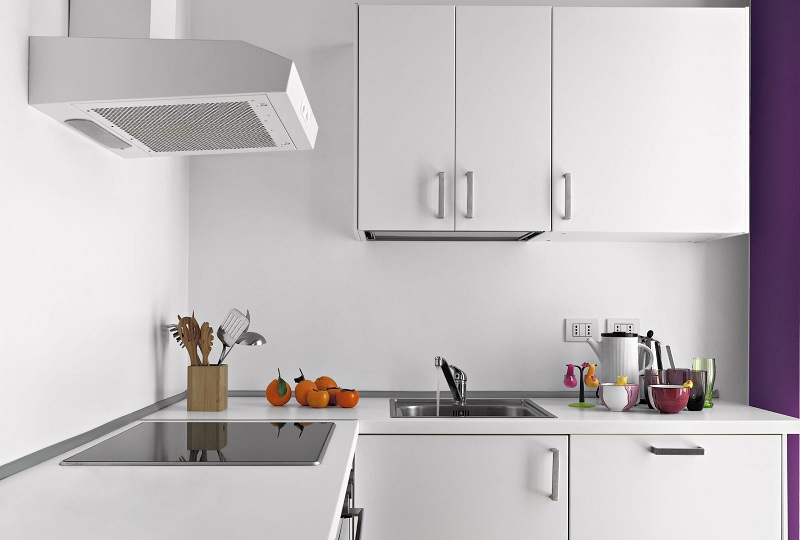
Dimensions
Here you need to consider that the future “helper” should fit between the hanging cabinets, and not stick out behind their facades, and also completely “cover” the surface of your plate and be at a certain height from it. But how can this be foreseen?
Let’s start with the width of the dome hood for kitchen. It should either be equal to the width of the built-in hob (usually 60 or 90 cm), or be larger (100 cm or 120 cm, but to find such today is quite difficult) – this is an unshakable rule. And it will be correct to focus not on the width of the entire hood of the hood – from edge to edge, but on the width of the useful exhaust surface. In such a situation, the built-in type hood will be ideal, since due to the sliding panel, the area of its catching surface may increase.

Another mandatory rule – the hood should be located from the stove at a distance of 65 to 75 centimeters, depending on what type of stove you use (gas, electric, dependent). So, if an electric stove is installed in your kitchen, the hood should be installed at a height of at least 65 cm from its surface. For a gas stove, this distance should be 75 cm.
Deviation from these rules always entails negative consequences. For example, if you hang the hood above the specified norms, then the selected power will not be enough, and if it is lower, it will already be a gross violation of safety regulations. In both cases, this is also considered a violation of the recommendations for operation, which entails a refusal on the part of the service center for warranty repairs.

As for the depth of the device, this is a purely individual parameter affecting the practicality of use and the harmony of the overall picture, which is created by the entire top row of hanging cabinets. But nevertheless, designers come to single advice: the best model in the kitchen interior is the one whose depth is equal to the depth of the cupboard.
Modes of operation
Under this parameter, you should understand what method of removal of gases and smoke is used in a specifically chosen model. There are only two of them – this is recirculation (when air is captured in the hood, passes through the filter and already cleaned returns to the room) and flow-through (when all sorts of evaporation are drawn into the ventilation duct). To say which of these two modes is better is very difficult since both of them have a lot of nuances. For example, the quality of air purification in the first case affects the type of filter used (coal or grease), as well as how often it is replaced. In the second variant, the length of the duct and the presence of bends in it play an important role.
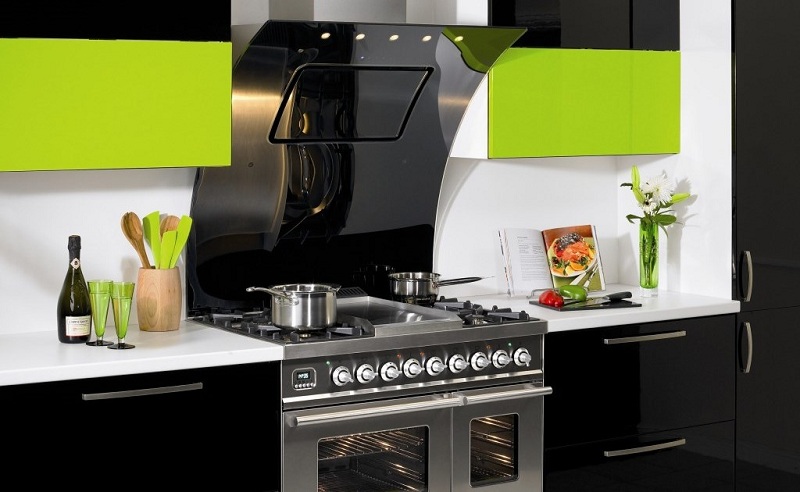
Power
This indicator is affected by the number of built-in motors. Naturally, two engines will capture more air than one, but the noise from them will be twice as much as from one. Again, technology does not stand still, and today models with low-noise, but very powerful engines come onto the market, so always choose the hood for kitchen with a higher output.
Control
In this case, everything is simple: you need to ask the sales assistant, which control method is used – touch, slider, remote or push-button. Which one to choose? This is a matter of individual preferences.

Additional functions
The set of additional functions sometimes includes the following:
- Backlight. Depending on how bright the light you need above the cooking surface, you can choose a hood with lighting from incandescent lamps, halogen or fluorescent lamps.
- Residual move. The fan can automatically turn on within 5 to 15 minutes after it is turned off. This feature helps to completely remove any fumes and odors from the kitchen.
- Electronic Timer. You set up the time when the hood will be disabled.
- Filter pollution indicator. Call for you, it’s time to replace or clean the filter.
- Interval inclusion. From the name, it is already clear that the hood can be configured to automatically turn on (for example, once every hour or 30 minutes) and work at low speed for the influx of new air.
- Focusing lighting. Allows you to direct the light and adjust its brightness according to your desire.
Difficult choice of type of hood: what to look for?
Choosing a hood for kitchen from an existing type manifold is really not easy. Built-in, dome or good old classics – what to stop? Expert advice, perhaps there would be very appropriate.
- Traditional hanging. They are mounted directly to the wall above the hob. If there is a hanging cabinet at this level, the hood is installed under it. As a rule, they work in the circulation mode, therefore, achieving clean air, you must constantly change the filters. But there are those that can be connected to the ventilation duct through a corrugated pipe. Of course, the second type does its job much better than the first.
Advantages: compactness, low price, ease of installation.
Disadvantages: poorly clean the atmosphere in the kitchen, you need to often change the filter.
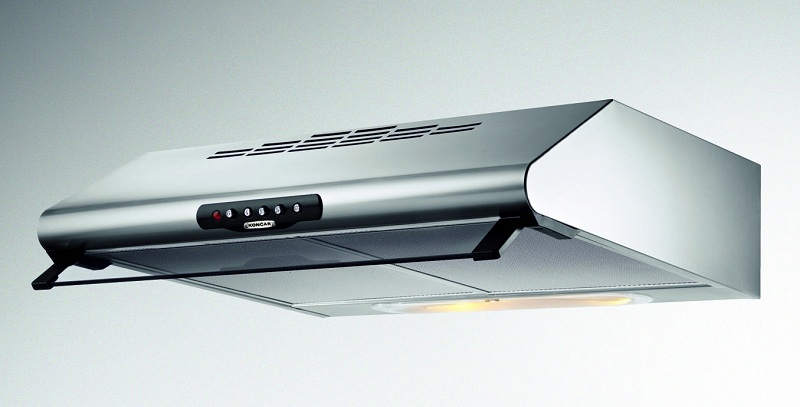
- Embedded. These devices, as the name implies, are embedded in the hanging cabinet itself. Many models have a sliding panel – and this greatly increases their performance. Can work both in the mode of withdrawal and in the circulating mode.
Advantages: compactness, ease of installation, high performance, aesthetic appearance.
Disadvantages: a little higher price, which is suspended.
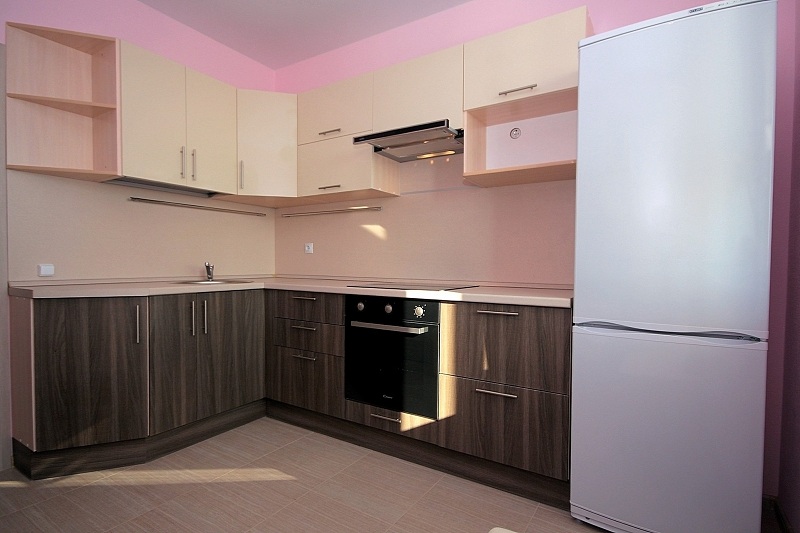
- Fireplace (dome). They got their name due to the shape resembling a chimney above the fireplace. Such hoods are mounted both to the wall and to the ceiling above the stove. Can work both in the mode of withdrawal and in the circulating mode. Their variety is simply stunning and allows you to implement the most creative ideas in the design of the kitchen interior.
Advantages: versatile design, aesthetic appearance, high performance.
Disadvantages: the presence of the ventilation channel, the cost.

What else you need to know about the hoods?
Extractor hoods are different: even of the same type, but among different manufacturers, these devices can differ significantly from each other. Therefore, in order to choose the right model, it is important to know not only by what principle it works but also what material its body is made of and how loudly it cleans the air.
Manufacturers use the following materials for the manufacture of exhaust:
- high strength plastic;
- enameled steel;
- stainless steel;
- strained glass;
- Aluminum alloys.
Each of these materials has its own advantages and disadvantages. So, for example, stainless steel devices, although they are an order of magnitude more expensive than plastic devices, have better durability and strength, and they look very nice in the interior.
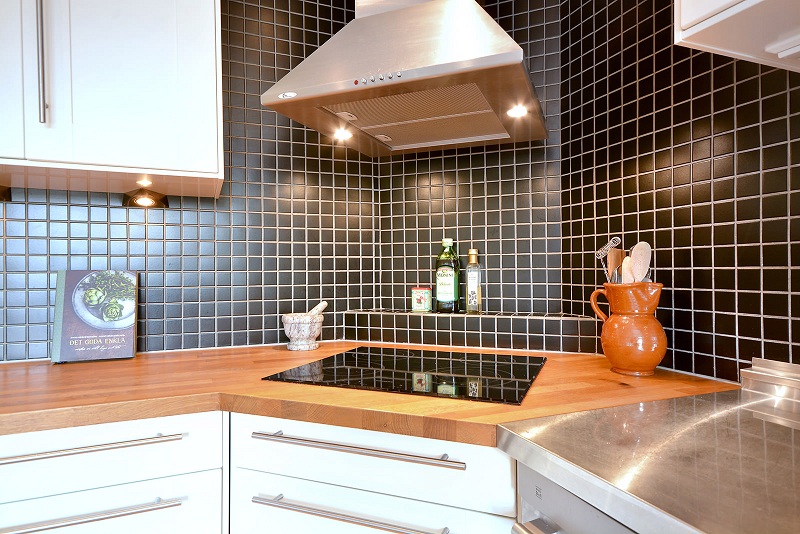
Regarding the level of noise that the hood produces during operation, this is also an important parameter. Judge for yourself if you’re “assistant” makes noise in such a way that in the 6-square-meter kitchen you will not hear your interlocutor, this will obviously because you discomfort or even lose your temper. So it is best to choose the model that works quite quietly – up to 50 dB.




